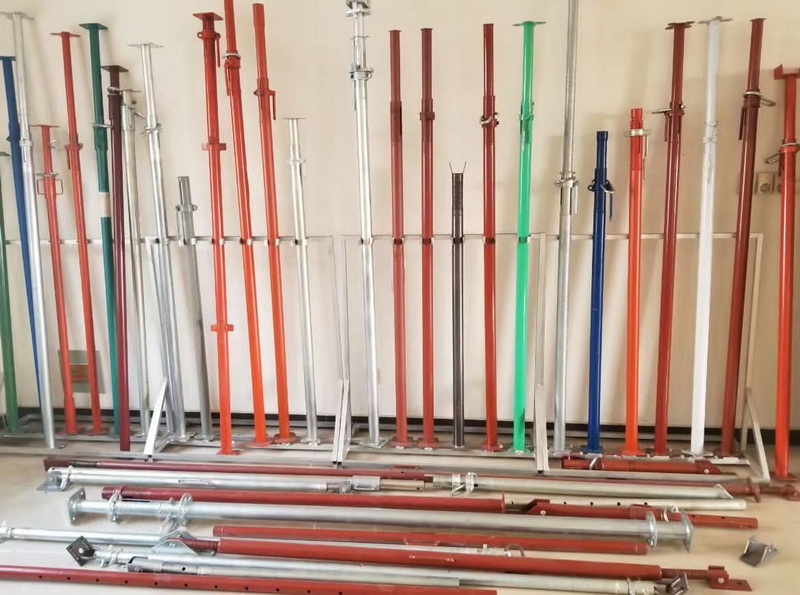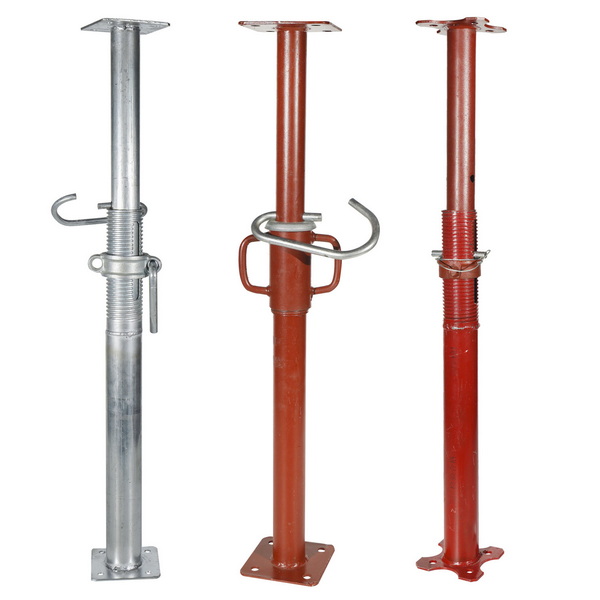Content Menu
● Understanding Jacks Telescopic Scaffolding Systems
● Comparing Jacks Telescopic Scaffolding to Traditional Options
● Core Advantages of Jacks Telescopic Scaffolding Systems
>> 1. Rapid Height Adjustment
>> 2. Superior Portability and Lightweight Design
>> 3. Adaptability to Uneven Terrain
>> 4. Enhanced Safety Features
>> 5. Cost and Labor Efficiency
● Types of Jacks Telescopic Scaffolding Systems
>> Single Telescopic Scaffolding
>> Double Telescopic Scaffolding
● Key Features That Drive Efficiency
>> Quick-Connect Modular Design
>> Height and Platform Adjustability
>> Compact Storage and Transport
>> Versatility Across Applications
● Real-World Example: Ultra Jack System in Action
● Safety and Compliance
>> Integrated Safety Features
>> Inspection and Maintenance
● Limitations and Considerations
● Innovations and Future Trends
>> Smart Safety Sensors
>> Tool Integration and Storage
>> Eco-Friendly Materials
>> Digital Planning and Augmented Reality
● Maintenance and Longevity
>> Routine Maintenance
>> Storage Best Practices
● Environmental and Economic Impact
>> Sustainability
>> Cost Savings
● Conclusion
● FAQ
>> 1. What defines a jacks telescopic scaffolding system?
>> 2. What is the maximum height for a jacks telescopic scaffolding system?
>> 3. Are guardrails and safety nets mandatory for jacks telescopic scaffolding?
>> 4. Can jacks telescopic scaffolding systems handle uneven or soft ground?
>> 5. How often should jacks telescopic scaffolding systems be inspected?
The construction industry is constantly evolving, seeking safer, faster, and more adaptable ways to work at height. The jacks telescopic scaffolding system also known as pump jack or ultra jack scaffolding-has emerged as a transformative solution for residential, commercial, and industrial projects. But what exactly makes this system more efficient than traditional scaffolding? In this comprehensive article, we'll explore the technology, efficiency, safety, and versatility of jacks telescopic scaffolding, supported by real-world examples and expert insights.

Understanding Jacks Telescopic Scaffolding Systems
The jacks telescopic scaffolding system is a vertically adjustable platform supported by mechanical jacks (pump jacks or ultra jacks) that travel up and down telescoping poles. These systems are engineered for rapid height adjustment, portability, and adaptability to various job sites, making them a preferred choice for siding, painting, roofing, and facade work.
Key Components:
- Telescopic Poles: Aluminum or steel verticals, extendable up to 50 feet.
- Pump Jacks/Ultra Jacks: Mechanical brackets that move the platform up or down via foot pump or hand crank.
- Work Platforms: Slip-resistant decks (12–32 ft long) for workers and materials.
- Braces & Safety Rails: Stabilizers and guardrails for fall protection.
- Anchors & Bases: Secure the system to ground or structure, even on uneven surfaces.
The platform is raised or lowered by pumping the jack with your foot or using a hand crank, allowing for quick, precise adjustments in working height. The system can be assembled, moved, and reconfigured with minimal labor and downtime.
Comparing Jacks Telescopic Scaffolding to Traditional Options
| Feature | Jacks Telescopic Scaffolding | Frame Scaffolding | Ladder Jack Scaffolding | Suspended Scaffolding |
| Max Height | Up to 50 ft | 100+ ft | ~20 ft | 100+ ft |
| Setup Time | Minutes to hours | Hours to days | Minutes | Hours |
| Adjustability | Instant, on-the-fly | Fixed by frame assembly | Limited | Motorized/manual |
| Portability | High, lightweight | Low, heavy frames | High | Medium |
| Stability | Excellent with braces | Excellent | Fair | Good |
| Load Capacity | 500+ lbs (2 workers) | 500+ lbs | ≤250 lbs | Varies |
| Best For | Siding, painting, roofing | Large, multi-story jobs | Quick, low-height repairs | High-rise, facade work |
| Cost Efficiency | High for small/medium jobs | High for large jobs | Low | Medium |
Core Advantages of Jacks Telescopic Scaffolding Systems
1. Rapid Height Adjustment
With the foot pump or crank, workers can quickly raise or lower the platform to any height within the system's range-no need to dismantle and reassemble as with traditional scaffolding.
2. Superior Portability and Lightweight Design
Most jacks telescopic scaffolding systems use aluminum poles and platforms, making them easy to transport and assemble-even in tight urban spaces or remote sites.
3. Adaptability to Uneven Terrain
Adjustable bases and braces allow the system to be safely installed on sloped or irregular ground, where frame scaffolding would require extensive leveling.
4. Enhanced Safety Features
- Guardrails and Safety Nets: Integrated guardrail systems and debris nets protect workers from falls and falling objects.
- Slip-Resistant Platforms: Anti-slip finishes on platforms reduce accident risk.
- OSHA and ANSI Compliance: Most leading systems meet or exceed regulatory standards for elevated work.
5. Cost and Labor Efficiency
- Lower Rental and Setup Costs: Rental costs for jacks telescopic scaffolding are typically $5–$15/day, compared to $15–$40/day for frame scaffolding.
- Reduced Labor: One or two workers can erect, adjust, and move the system, minimizing crew size and labor hours.

Types of Jacks Telescopic Scaffolding Systems
Single Telescopic Scaffolding
- One set of vertical standards and ledgers.
- Ideal for projects with limited space or when working next to a structure.
- Easy to assemble/disassemble and provides stable access.
Double Telescopic Scaffolding
- Two sets of inner and outer standards, with double extension for greater height.
- Free-standing, suitable for open areas and projects requiring extra stability.
- Used in construction, maintenance, and industrial settings.
Key Features That Drive Efficiency
Quick-Connect Modular Design
Modern jacks telescopic scaffolding systems feature quick-connect mechanisms, allowing platforms, braces, and guardrails to be installed or removed in minutes. This modularity makes it easy to adapt the system to changing site needs.
Height and Platform Adjustability
- Multiple Platform Heights: Some systems offer up to five adjustable platform heights, from 1m to 2m (3ft to 6.5ft), covering a wide range of working scenarios.
- Expandable Reach: Pole connectors allow extension up to 48–50 feet, supporting multi-story projects.
Compact Storage and Transport
- Minimal Footprint: Systems like the Teletower can be transported in a small van or car and require little storage space.
- Lightweight Materials: Aluminum construction ensures easy handling without sacrificing strength.
Versatility Across Applications
- Construction: Siding, painting, sheathing, and roofing.
- Maintenance: Industrial equipment access, building inspections, repairs.
- Industrial: Power plants, refineries, and chemical facilities.
Real-World Example: Ultra Jack System in Action
The 24′ x 48′ Ultra Jack System includes four 24ft aluminum poles, connectors to extend to 48ft, pump jacks, workbenches, safety net, and anti-slip platforms. The system supports two workers and up to 500 lbs between two poles, with quick setup and easy adjustment for different tasks.
Safety and Compliance
Integrated Safety Features
- Guardrails: Required by OSHA above 10 ft. Many systems offer quick-install railings and toeboards.
- Debris Nets: Protect workers and pedestrians below from falling materials.
- Anti-Slip Surfaces: All major platforms feature anti-slip coatings for secure footing.
Inspection and Maintenance
- Pre-Use Checks: Inspect brackets, poles, and platforms before each use.
- Regular Load Testing: Monthly load-testing of brackets and poles is recommended for safety.
- Training: Operators should be trained in assembly, adjustment, and emergency procedures.
Limitations and Considerations
While the jacks telescopic scaffolding system offers many advantages, it is best suited for specific project types:
- Height Limits: Most systems max out at 50 ft; taller structures may require frame or suspended scaffolding.
- Platform Width: Typically narrower than frame scaffolding; less suitable for heavy equipment or large crews.
- Not Ideal for High-Rise Construction: For skyscrapers, traditional frame or suspended systems are more practical.
Innovations and Future Trends
Smart Safety Sensors
Some advanced systems are integrating sensors to monitor load, tilt, and environmental conditions, alerting workers to potential hazards.
Tool Integration and Storage
Modern platforms feature built-in tool trays, power outlets, and storage for increased productivity.
Eco-Friendly Materials
Aluminum and recycled steel are now standard, reducing weight and environmental impact.
Digital Planning and Augmented Reality
Software tools and AR applications are being developed to help plan, assemble, and inspect jacks telescopic scaffolding systems, further enhancing efficiency and safety.
Maintenance and Longevity
Routine Maintenance
- Lubrication: Mechanical jacks and moving parts should be lubricated regularly to ensure smooth operation.
- Component Inspection: Check for cracks, bends, or corrosion on poles and platforms.
- Replacement: Worn-out or damaged parts should be replaced immediately to maintain system integrity.
Storage Best Practices
- Dry Storage: Keep components dry to prevent rust and corrosion.
- Secure Storage: Store poles and platforms flat, avoiding excessive stacking or pressure.
Environmental and Economic Impact
Sustainability
- Material Efficiency: Aluminum and steel are recyclable, making the system eco-friendly.
- Reduced Waste: Modular, reusable components mean less waste compared to disposable scaffolding materials.
Cost Savings
- Lower Transportation Costs: Lightweight and compact design reduces shipping expenses.
- Reduced Labor Costs: Fewer workers and less time required for assembly and disassembly.
Conclusion
The jacks telescopic scaffolding system stands out as a highly efficient, adaptable, and safe solution for a wide range of construction and maintenance projects. Its rapid height adjustment, lightweight design, portability, and robust safety features make it far more efficient than many traditional scaffolding options, especially for small- to medium-scale jobs. While it may not replace frame or suspended scaffolding for all scenarios, its unique strengths ensure it remains a vital tool for modern construction teams seeking speed, flexibility, and safety.

FAQ
1. What defines a jacks telescopic scaffolding system?
A jacks telescopic scaffolding system uses mechanical brackets (pump jacks or ultra jacks) to move platforms up and down telescopic poles, providing rapid height adjustment and a stable working platform for construction, painting, and maintenance.
2. What is the maximum height for a jacks telescopic scaffolding system?
Most systems can safely reach up to 50 feet with proper engineering and pole extensions. Typical setups for aluminum poles range from 30 to 40 feet.
3. Are guardrails and safety nets mandatory for jacks telescopic scaffolding?
Yes. OSHA requires guardrails or personal fall arrest systems above 10 feet. Most systems include integrated guardrails and optional debris nets for maximum safety.
4. Can jacks telescopic scaffolding systems handle uneven or soft ground?
Yes. Adjustable screw jacks, spike anchors, and wide anti-slip bases allow secure installation on uneven or soft surfaces, making the system highly versatile.
5. How often should jacks telescopic scaffolding systems be inspected?
Scaffolding should be inspected before each use, with monthly load-testing of brackets and poles to ensure ongoing safety and compliance.






















